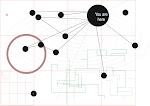
The Archival Turn
Emerging from my interests in memory and vernacular photography this collection of work intends to explore several related questions:
What guides our thinking about historical artifacts?
How are these ideas at play in the curation of an archive?
What role does the archive play in the formation of memory and history?
Traditionally, an archive has been regarded as a repository of objects and information essential to human history. However, in the last half of the 20th Century it underwent a profound conceptual change shifting its emphases from the objects to the archivist, and from place to process. At the heart of this archival turn is a fundamental skepticism of Modernity’s scientific methodologies.
Research has shifted from the objective recording of static and isolated objects to focus instead upon the curatorial power, and the cultural and historical embeddedness of the archivist. This turn has illuminated the inescapable fingerprint of archivist in the formation of the archive, human memory and ultimately history itself. As a result, layers of contexts, presuppositions, and the embedded power relationships between the archivist and archive come to the fore.
With two trajectories in mind, I have created an archive to explore the subjectivity of human engagement with objects while emphasizing the often-overlooked physical nature of the photographic object. I have utilized traditional archive forms of drawers and artifact trays, accession numbers and acid free enclosures to both suggest Modernity’s curatorial processes of empiricism, isolation, and limited access. These methods also intend to re-establish the viewer’s awareness of the photograph’s physicality. By modifying these forms, viewers may explore the perceived stability and instability of the relationships among the artist as curator and the objects themselves. Additionally, strategies of translucent layers, white-on-white printing, and the imaging of culturally shared symbols and collective memories, allows me to create a variety of contextual lenses through which we may explore the subjectivity of our engagements with historical objects.


















